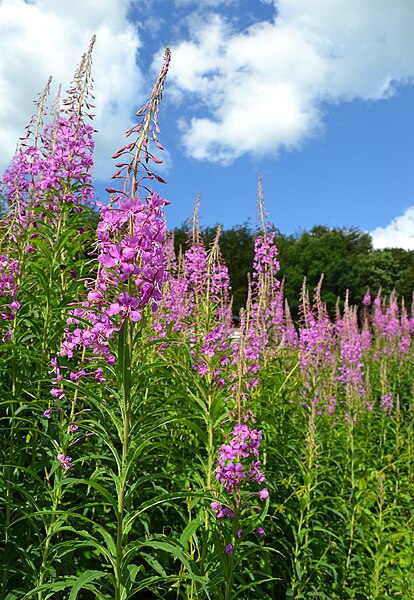Fireweed Identification – Chamerion angustifolium
Heads up
Fireweed, or Chamerion angustifolium, is a perennial plant that belongs to the Onagraceae family, the same family as the well-known Evening Primrose. The Fireweed goes by several names. Some call it “Rosebay” while others might refer to it as the “Great Willowherb.” Names aside, this plant stands out due to its vivid appearance and can be identified through its unique characteristics.
Fireweed: Key Parts in Photos




Where to find it
Fireweed loves the sun but doesn’t mind a bit of shade either. You’ll often find it where the soil remains moist, making it common at woodland edges, clearings, and along shores. When fully grown, it can reach impressive height of up to 7 feet, often towering above many other plants.
How to identify Fireweed
Fireweed’s flowers grow in a spike-like cluster known as a raceme. These clusters appear at the top of the main stem and the ends of branching stems. Each flower is around an inch across and boasts four paddle-shaped petals that can range from pink to purplish in color. These petals are surrounded by four narrow, darker sepals which are a bit shorter than the petals. In the center of the flower, you’ll find eight long, white stamens. Between these stamens is a white style, which is a part of the female reproductive organ. Fireweed’s style is longer than the stamens and splits and curls at its tip.
The leaves are attached alternately along the stem. These simple leaves can range from 2 to 8 inches long. They’re mostly smooth-edged but may have a wavy pattern. A notable feature of these leaves is the creamy white midrib running down the center. The stem might be green or tinged reddish. The upper parts of this stem can be stiffly hairy.
Fireweed fruits are slender pods that gradually turn a purplish-red color as the seeds inside mature. When they’re ripe, these pods will split. Inside, you’ll find small brown seeds, each with a tuft of white hair. This tuft acts like a parachute, allowing the wind to carry the seed far and wide.
